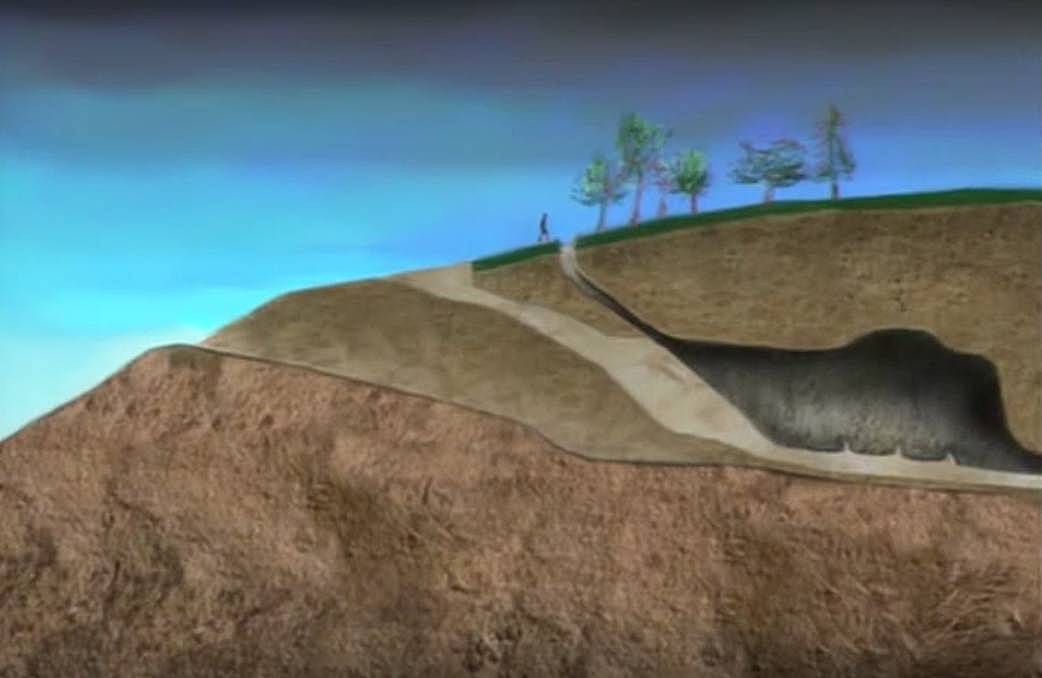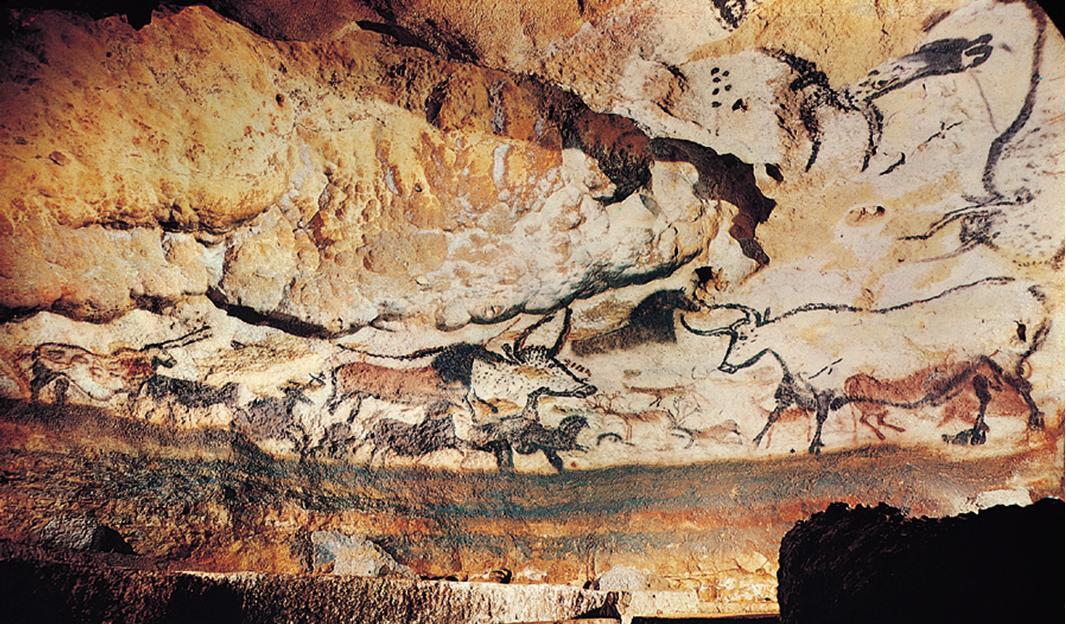Cave and Art
1
Communication is necessary for all animals in order to form tribes and procreate. Communication requires expression, and expression can happen in a lots of ways. For human beings, language, music, and paintings are all means of expression, and over a special period of time known as the Ice Age, these means developed into art.
There have been more than one Ice Age in history, while similar environments remained throughout: extreme coldness. It was a time when humans could only hide themselves in underground caves, and the magnificent sceneries outside didn’t seem attractive to Man due to coldness. Although there were plenty of huge animals from the frigid zone that were a source of meat, humans could only hide in the caves because they were from the tropical Africa. The combination of humans from the tropical Africa, the huge animals from the frigid zone, and the appearance of caves formed the environment wherein art emerged.
The meat of the huge animals could provide protein, calcium, and fat, elements necessary for the development of the human brain. The heat for the brain could only come from fat; too much carbonized food would bring the temperature of the brain too high and lead to the destruction of the brain. People during the Ice Age had enough food but could not stay long outside. Thanks to the remarkable development of the brain and the limited space for activities, the humans found it necessary to invent things to entertain themselves rather than amuse themselves with the beautiful landscapes of mother Nature. They relied on non production activities to while away time such as painting and making up stories.
We know that it is great fun to go fishing, hunting, taking a walk, or just looking at the rivers in the forest on a lovely day or, like what Napoleon once said, counting stars through a wine bottle. But none of these self-amusements was possible during the Ice Age due to the extreme cold outside. How could people deal with boredom in the dark caves? And then there came art, the creation of entertaining and interesting things by using imagination and means of expression, which can be either painting or language. There were enormous, delicate wall paintings on the huge rocks of the cave in Lascaux, France. The theme of these wall paintings were mostly scenes of the outside world, which meant it was produced from human imagination and memories. There was no work of words came down from the same period, but it was believed that people were making up stories while they painted, stories that humans truly loved. Those who hated story telling were eliminated since they could not understand experience from those stories. Making up stories was similar to painting; they started from small ones with only one character, and then developed into sophisticated ones or even an epic with lots of characters, complicated plots, and huge scales in response to those magnificent wall paintings.
Of course one needed to improve the techniques to make up and tell stories. Some stories were interesting while others were less attractive. Some people made their stories clear and wonderful while others only confused their listeners with redundancy. It was all about techniques. Those equipped with good story-telling techniques enjoyed not only popularity but also the admiration of the opposite sex. If the techniques, similar to that of painting and crafting, were superb and outstanding, they became what we would call art today.
It required a period of time for the improvement of techniques to happen, as well as communication, which were conditions possible in the cave existence during the Ice Age.
Hence, a line was drawn between the cave and the outside world: the outside was real as a hunting ground, while the inside was fantasy created through art.
In the long nights hidden in the caves, humans improved their imagination and the ability to express themselves. At the same time, poems had come out of language, and gradually developed into songs. As we know, some epics have a melody and could be sung, and they later became subdivided into different dramas.
During the Cultural Revolution (1966-76) China was wrapped up in class struggles and it was extremely hard for someone like us to survive, labeled as youth of the “black classes”. It was even worse than the Ice Age since there were no wild animals outside to serve as a source of meat, only the ubiquity of the dictatorship and its tools. Caves to shelter us from the storm were rare to find. One had to be very prudent and careful when communicating with people outside, because imprisonment might result if reported to the authorities by others. The Salon in the Lu’s thus became the cave for us.
2
It is believed that ten thousand years ago, which was the era without agriculture, human society was matrilineal. The patrilineal society was formed after the appearance of agriculture (although it was women who developed agriculture). Agriculture appeared eight millennia ago, while the wall paintings of Lascaux appeared 18 millennia ago, when no agriculture existed. The average human longevity at the time was 20, so it would be impossible for parents to live long enough to raise kids if monogamy was the norm. So the only lifestyle was polygamy, in which all the children were the kids of all adult men.
 Creative art gradually became the means of courtship and education in the cave. This was because the cave was the very place where humans could mate, procreate, and raise the young with male and female all mixed together, unlike the situation where people living in tents can divide themselves by gender and by family lineage. Since life expectancy was extremely short at that time, everyone was young, and there was no need for people to wear cloths in the warm cave. As a result, the cave was permeated with sex and creation, with art as the means of courtship (it had other functions, of course). The artistic creativity was sexually seductive, often used to express sexual love.
Creative art gradually became the means of courtship and education in the cave. This was because the cave was the very place where humans could mate, procreate, and raise the young with male and female all mixed together, unlike the situation where people living in tents can divide themselves by gender and by family lineage. Since life expectancy was extremely short at that time, everyone was young, and there was no need for people to wear cloths in the warm cave. As a result, the cave was permeated with sex and creation, with art as the means of courtship (it had other functions, of course). The artistic creativity was sexually seductive, often used to express sexual love.
During the Cultural Revolution, we were young and often in pursuit of love. In the cave of the Lu’s, we strived to compose poems and painted paintings to win love from the opposite sex, indulging ourselves in talks of love and sex as a luxury, “luxury” because it was a frequently-used word at that time, and because beautiful things only existed in our imagination. It was hard to find anywhere else friends of opposite sex with whom to have meaningful exchanges. In here there were many such people, mostly handsome young men and pretty women.
It has been forty years since the end of the Cultural Revolution, and the living conditions have improved a lot. Today we have an abundance of food and clothes for survival, But when I am writing and painting, I like to imagine being with a group of friends and sitting around the campfire.
During the Ice Age, the campfire would be inside the cave, and during the interglacial periods, it would be under the vast starry sky.

